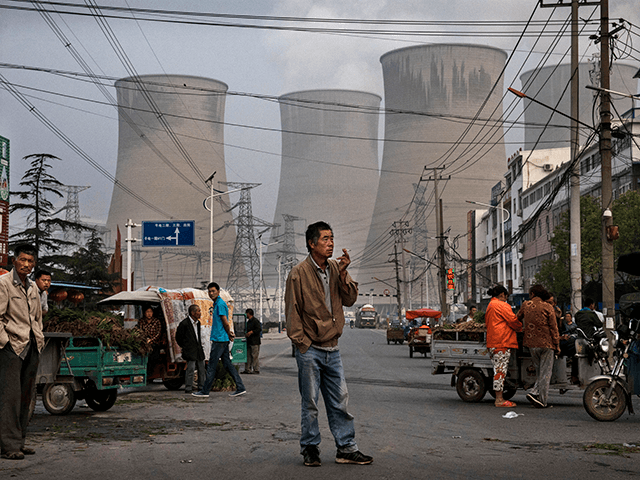A report published on Monday by Ember, a U.K-based energy and climate research organization, found that China generated 53 percent of the world’s coal-fired power in 2020.
China was the only G20 nation to significantly increase its use of coal-fired power plants last year, building over three times as much coal capacity as the rest of the world combined.
Reuters noted this surge of 9 percent in China’s coal power over the past five years came “despite climate pledges and the building of hundreds of renewable energy plants.”
The climate change industry remains extremely reluctant to admit Beijing might not have been entirely sincere when it promised to go “carbon neutral” within a few decades:
China has promised to reduce its dependence on coal and bring emissions of climate-warming greenhouse gas to a peak before 2030 and become “carbon neutral” by 2060.
“China is like a big ship, and it takes time to turn in another direction,” said Muyi Yang, senior analyst with Ember and one of the report’s authors.
China has been unable to find enough clean energy to meet rapid increases in demand, with renewables meeting only half of China’s power consumption growth last year.
Reuters quoted Greenpeace acknowledging that China approved another 46.1 gigawatts of new coal-fired power plant construction last year, which is more than it approved during the previous three years combined, and its generation volume is increasing even as the price of electricity plummets. If all of the projects approved by China are completed and brought online, it will construct over five times as much coal power as the rest of the planet over the next few years.
This is rather difficult to square with the notion of a “big ship” slowly turning in a new direction, and the climate change industry’s response to China’s coal surge is a stark contrast to the economy-wrecking demands for hairpin turns that are constantly pressed on the United States and other Western nations.
According to Ember’s report, the world outside of China saw a record-breaking 4 percent decline in coal power generation, while wind and solar power grew at roughly the same pace as in China (15 percent worldwide, 16 percent for China.)
The U.S. reduced coal power by 20 percent, while India – roughly analogous to China in its rapid pace of industrial development and ravenous appetite for inexpensive, reliable energy – reduced coal power generation by 5 percent.
Ember analysts complained that advanced economies were turning to fossil fuels instead of wind and solar to meet the growing demand for power, so emissions grew by about 2% compared to 2015, when the Paris climate accord was signed.
“Despite coal’s record drop during the pandemic, it still fell short of what is needed. Coal power needs to collapse by 80% by 2030 to avoid dangerous levels of warming above 1.5°C. We need to build enough clean electricity to simultaneously replace coal and electrify the global economy. World leaders have yet to wake up to the enormity of the challenge,” said Ember’s Dave Jones.
Yale’s School of the Environment noted that during China’s recent meeting of the National People’s Congress – during which the Communist government made its latest promises to begin meeting its climate change promises any day now – air pollution hit the highest levels in Beijing since 2019.
“Steel, cement, and heavy manufacturing, predominantly backed by coal power, boosted China’s carbon dioxide emissions 4 percent in the second half of 2020 compared to the same pre-pandemic period the year before. At the same time, the goals in the country’s 14th Five-Year Plan on energy intensity, carbon intensity, and renewables were hazy as well, little more than vague commitments to tackle carbon dioxide emissions,” the Yale paper noted.

COMMENTS
Please let us know if you're having issues with commenting.